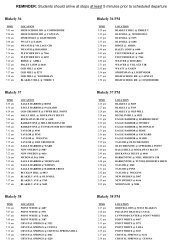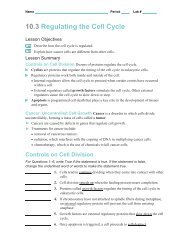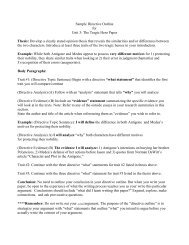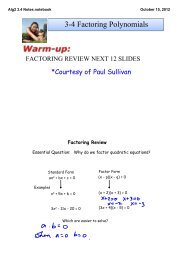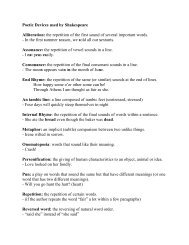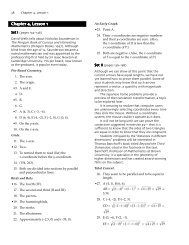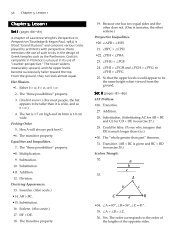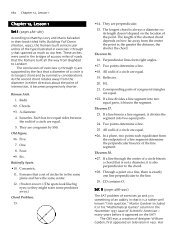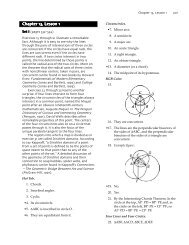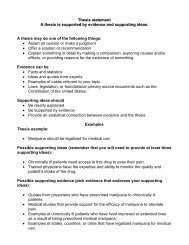Biology EOC Study Guide: Part 2, Cell Biology Content Standards ...
Biology EOC Study Guide: Part 2, Cell Biology Content Standards ...
Biology EOC Study Guide: Part 2, Cell Biology Content Standards ...
You also want an ePaper? Increase the reach of your titles
YUMPU automatically turns print PDFs into web optimized ePapers that Google loves.
organism.<br />
What to look for<br />
Nothing tricky here. Just be careful that you do not start thinking that genes change because<br />
they “need” to. There will always be some chemical signal that starts or stops things from<br />
happening. If it works and is an advantage, great. If it doesn’t, the organism may die and not<br />
pass of that trait or ability to respond to a change.<br />
8. Genes are carried on chromosomes. Animal Describe and model the process of mitosis, in<br />
cells contain two copies of each chromosome which one cell divides, producing two cells, each<br />
with genetic information that regulate body with copies of both chromosomes from each pair<br />
structure and functions. Most cells divide by in the original cell.<br />
a process called mitosis, in which the genetic<br />
information is copied so that each new cell<br />
contains exact copies of the original<br />
chromosomes.<br />
In Other Words<br />
Genes are sequences of DNA. Genes are located on chromosomes that are housed within the<br />
cell nucleus. Mitosis is the process of cell division that results in an exact copy of the cell.<br />
Important Notes<br />
The process of mitosis:<br />
1. G 1 Phase: Growth Phase 1. The cell grows.<br />
2. S Phase: Synthesis Phase. The cell copies its chromosomes (it synthesizes a copy of each of its<br />
chromosomes). The copies are held together at a point called the centromere.<br />
3. G 2 Phase: Growth Phase 2. The cell grows again.<br />
4. M Phase: Mitotic Phase consists of 4 parts:<br />
a. Prophase: The cell’s nucleus dissolves and chromosomes condense.<br />
b. Metaphase: The cell’s chromosomes line up single file along the middle of the cell.<br />
c. Anaphase: The centromeres split and the chromosome pairs pull apart to opposite<br />
sides of the cell.<br />
d. Telophase: The two sets of chromosomes form two new nuclei.<br />
5. Cytokinesis: The cell’s cytoplasm<br />
splits in two forming two new<br />
cells. This usually happens at the<br />
same time as Telophase.<br />
However, there are some cells<br />
that do not go through<br />
cytokinesis and instead form cells<br />
with many nuclei in them<br />
(multinucleate cells). Fungi have<br />
multinucleated cells. Your muscle<br />
cells are also multinucleate.



